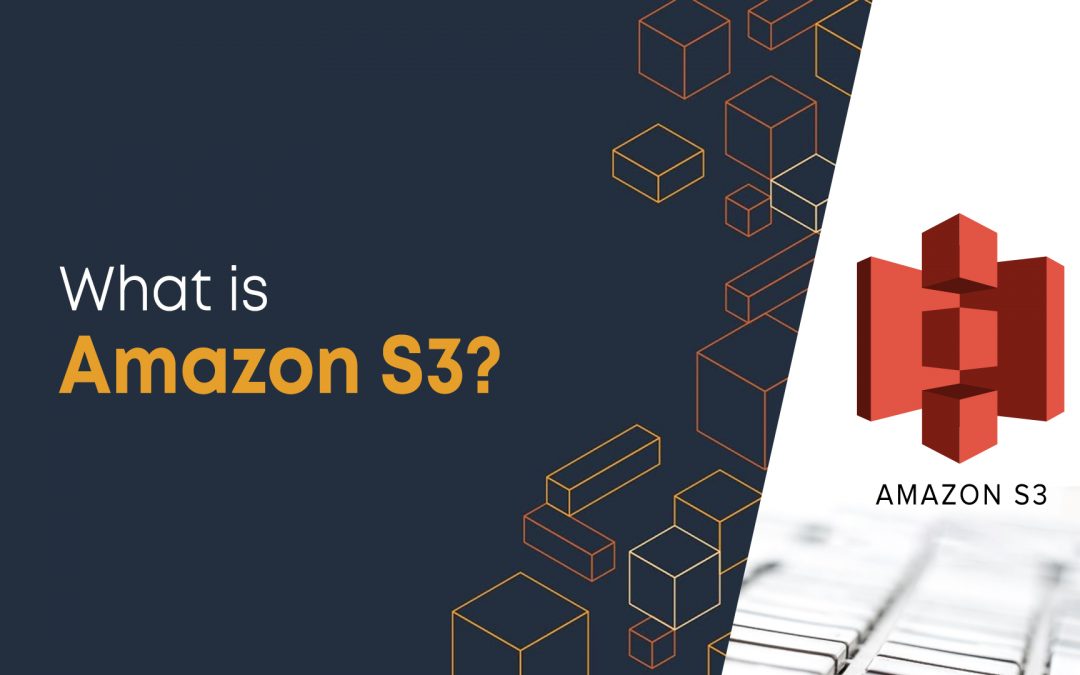Amazon Web Services (AWS) offers a cloud storage solution called Amazon Simple Storage Service (S3), which is known for its scalability, security, and durability. Amazon S3 is an economical solution for object storage that does not compromise on performance. It allows users to scale up their storage needs on a pay-as-you-go pricing model without incurring additional expenses on hardware maintenance, refresh cycles, and system upgrades, which can be costly and complicated in on-premise storage. The core components of Amazon S3 are buckets and objects that can be used to organize, store, and retrieve data easily through a user-friendly interface accessible from anywhere and at any time.
Amazon S3 is a secure platform that can store data from websites and mobile applications, as well as complex enterprise applications, such as data archival, backups, and big data analytics. Additionally, it can be integrated with other AWS services like Amazon CloudFront, Amazon EC2, and Amazon Lambda, enabling users to create scalable and reliable systems.
Why Amazon S3:
1. Backup and Disaster Recovery
Amazon S3 is a highly secure and cost-effective solution for disaster recovery and backing up important data. By keeping multiple copies of your data in different locations, S3 provides a reliable and affordable backup solution that reduces the risk of data loss due to hardware failures, natural disasters, or other unforeseen events.
Switching to S3 for backup and disaster recovery can save organizations money compared to traditional backup methods such as tapes, disks, and physical storage devices. S3 offers advanced features such as versioning and cross-region replication that enhance the security and reliability of backup data. In case of a disaster, data can be swiftly restored from S3, minimizing downtime and the impact on business operations.
S3 can also be integrated with other AWS services like Amazon CloudTrail, which provides a comprehensive auditing and monitoring solution for data.
2. Pay-as-you-go pricing model
The pay-as-you-go pricing model of AWS cloud is advantageous for businesses and individuals with diverse workloads. This model enables users to pay only for the computing resources they use, rather than committing to a fixed amount of resources in advance. It allows for efficient scaling of compute resources based on specific needs, enabling customers to respond to changes in workload. This model is cost-effective, particularly for unpredictable workloads, as users only pay for the resources they use, avoiding hardware maintenance costs, downtime, and overprovisioning their infrastructure. The pay-as-you-go pricing structure is considered one of the most affordable offerings of AWS cloud.
3. Static Website Hosting
Amazon S3 is an affordable and scalable solution for hosting static websites that provides high availability and security. Because static websites do not require server-side processing, they are a good fit for hosting on S3. This allows users to benefit from the affordable pricing and scalability of AWS cloud.
S3 can also be used in conjunction with other AWS services, such as Amazon CloudFront, a low-cost content delivery network (CDN) that allows you to deliver your content to users with low latency and high throughput. By using S3 as a CDN, businesses can deliver content to users from locations closer to them, reducing latency and improving the user experience.
S3 provides a reliable and scalable content delivery system that is a cost-effective alternative to traditional CDN solutions and can handle traffic spikes with ease. Additionally, S3 offers features like versioning and data lifecycle management, making it easy to maintain the content on your website.
4. Big Data Processing
Amazon S3 provides a highly scalable and cost-effective solution for storing and processing big data. It offers an accessible data lake for storing and processing vast amounts of data. Users can leverage AWS services like Amazon EMR or Amazon Athena to process their data in S3 storage, eliminating the need to move to another storage solution and minimizing costs.

On-premise data analytics options like data warehousing can be significantly more expensive than S3, which offers a low cost per GB storage and integration options with other AWS services. Additionally, S3 offers features like versioning and data lifecycle management to simplify the management of large data sets.
5. Content Distribution:
Amazon S3 is a global content delivery solution for various types of content like images, videos, and software updates. Users can use AWS data transmission options to distribute their content to their intended audience, ensuring low latency and high throughput. Additionally, S3 can integrate with other AWS services, such as Amazon CloudFront, to customize content delivery for specific needs.
6. Object Storage:
Amazon S3 provides a reliable and scalable storage solution for managing unstructured data. Its object storage solution is cost-effective and can handle files of different sizes, shapes, and types. The data stored in S3 can be accessed from anywhere in the world by anyone with internet access, including videos, audio files, and other types of data. Compared to traditional on-premise storage options, S3 is more affordable because of its low cost per GB of storage and data transfer. With features like data lifecycle management and versioning, users have easy control over their storage objects.
7. Image and Video Hosting:
Amazon S3 provides a secure and cost-effective solution for hosting videos and images with built-in data replication and protection against data loss. S3 allows users to store digital media, which can be quickly delivered to the audience with low latency. Additionally, S3 offers advanced features such as data lifecycle management and versioning that allow users to easily manage their digital assets. By integrating with other AWS services like Amazon CloudFront, S3 offers the ability to customize the distribution of images and videos to meet specific needs.
8. Data Archiving:
Amazon S3 provides a secure and cost-effective solution for managing and storing data that is no longer actively used but needs to be retained for compliance or other purposes. S3 enables you to store your data at a low cost and retrieve it when required, reducing the expenses associated with managing large volumes of data on-premise. S3 also offers specific storage options for archiving data, and features like versioning and data lifecycle management can be used to efficiently manage and organize your archived data.
9. Log and Event Data Analytics:
Amazon S3 is a cost-effective and secure solution for storing and analyzing log and event data. With its automatic data replication and protection against data loss, S3 provides a reliable option for storing log and event data. By leveraging S3’s features, businesses can reduce their storage and analysis costs while gaining valuable insights into their log and event data, helping them improve their operations.
How to use Amazon S3 for maximum Cost Optimization?
Firstly, make use of S3 Storage Classes which provide different levels of speed and availability for storing data. Secondly, enabling versioning can help protect against data loss by keeping multiple copies of an object. Thirdly, S3 Transfer Acceleration can be utilized for quick and cost-effective uploading of large data sets. Lastly, enabling S3 Inventory can provide a cost-effective way to manage and track data in S3, generating detailed reports on objects, metadata, and storage class.
Amazon S3 offers various benefits, including scalability, security, durability, and high availability. With its highly scalable design, Amazon S3 can store and retrieve large amounts of data quickly, automatically handling data storage and retrieval, allowing users to focus on expanding their business. To protect user data, Amazon S3 includes several robust security features, such as monitoring, access control, and encryption. Users can regulate data access with fine-grained access controls like AWS Identity and Access Management (IAM) policies and safeguard data using encryption technologies like SSL/TLS.
Amazon S3 is also designed to achieve 99.999999999% (11 9’s) durability, ensuring that user data is stored across multiple servers and is highly resistant to data loss. It also provides high availability, with automatic data replication and multiple data centers to guarantee that data is always accessible, even during an outage. This makes Amazon S3 a reliable and accessible platform for users to store and retrieve their data.
 Finland
Finland Bangladesh
Bangladesh
